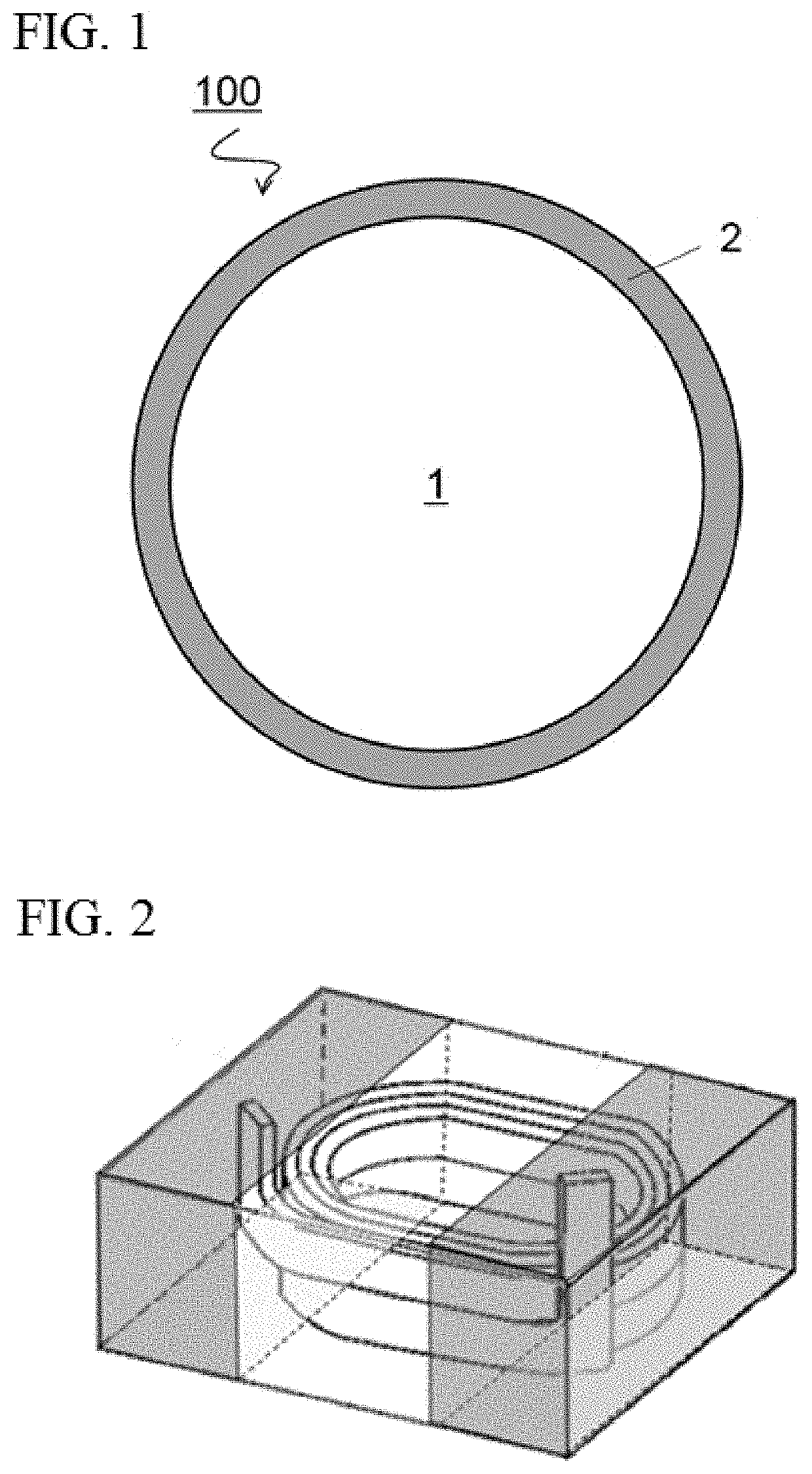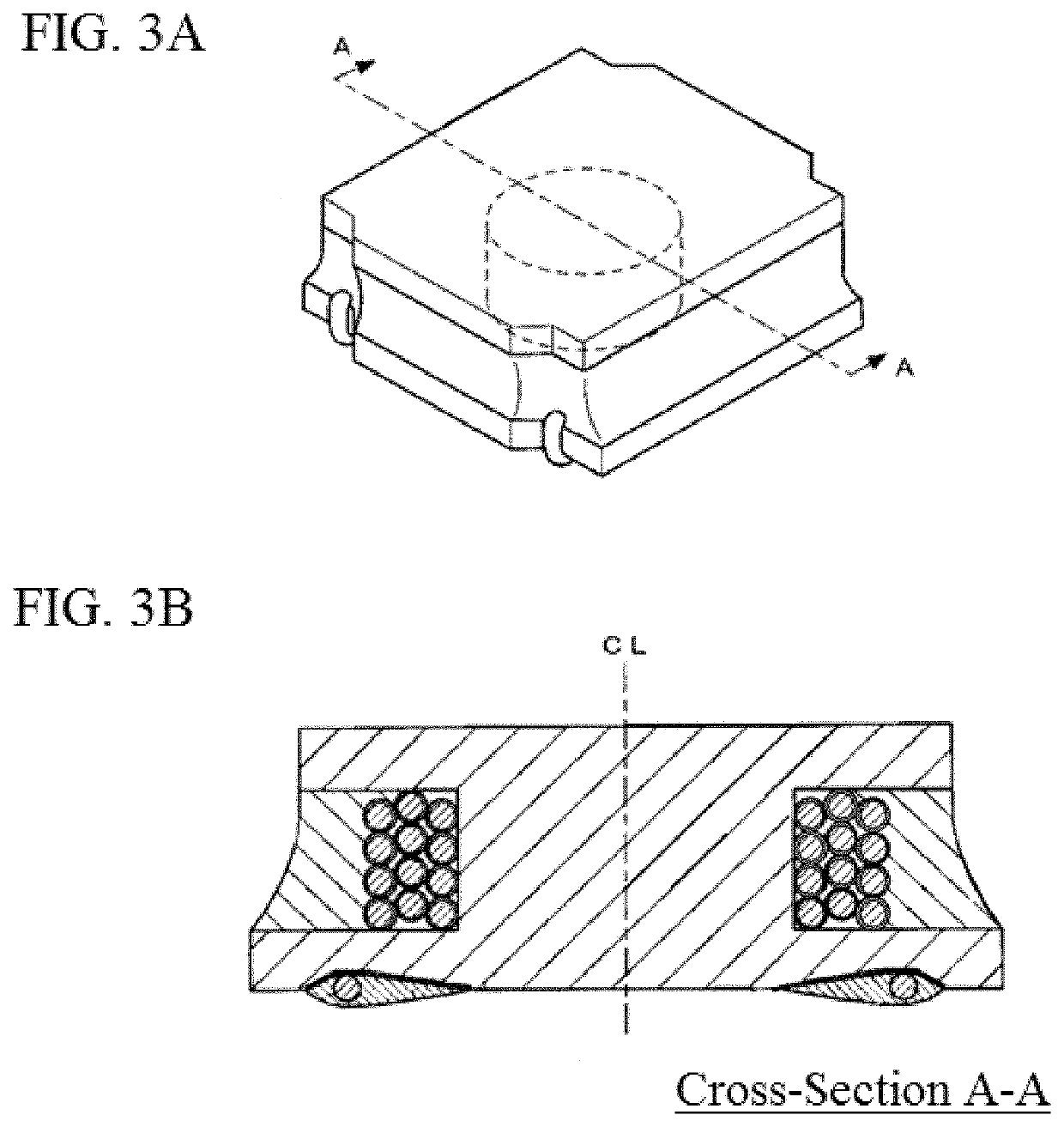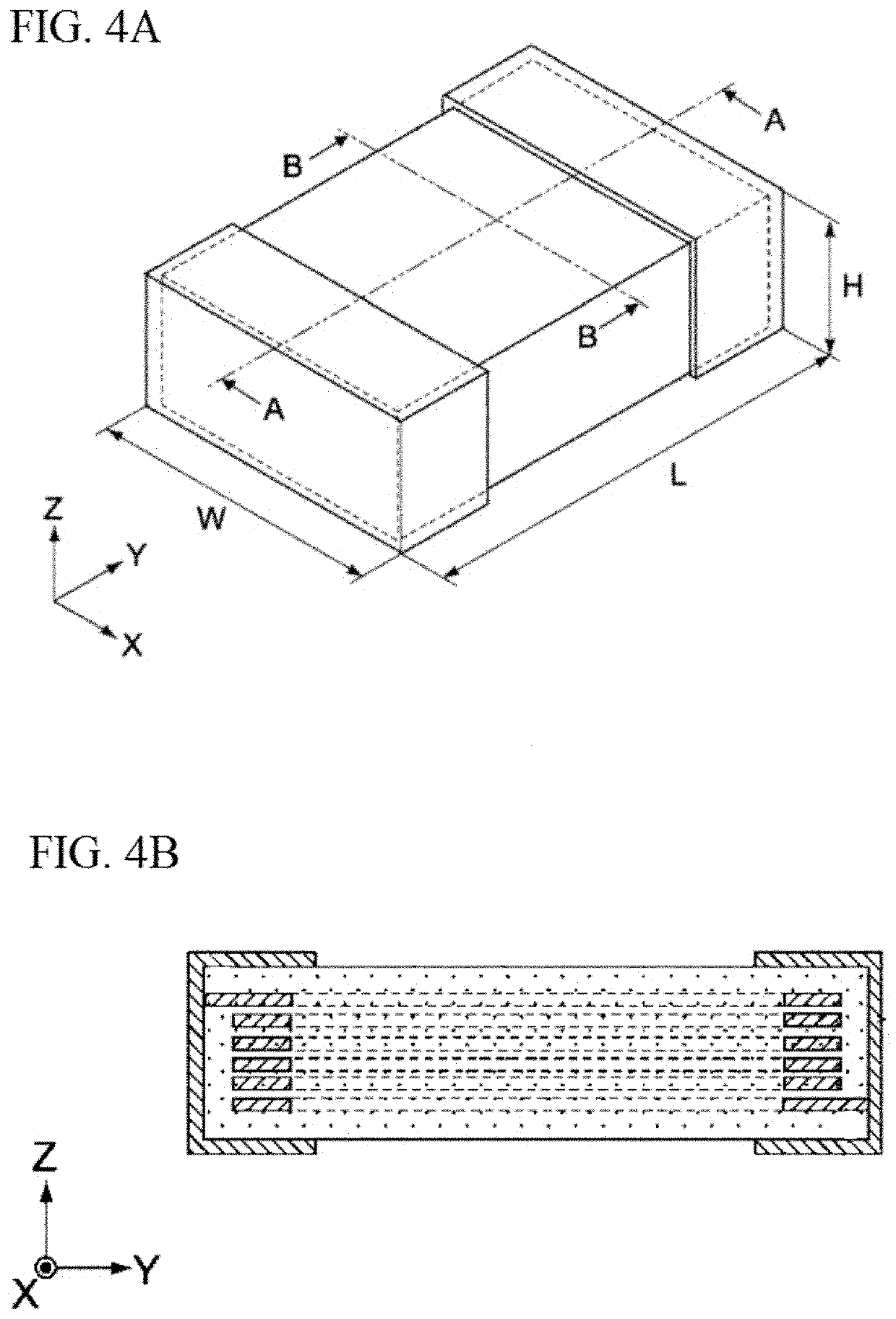Magnetic alloy powder and method for manufacturing same, as well as coil component made of magnetic alloy powder and circuit board carrying same
- Summary
- Abstract
- Description
- Claims
- Application Information
AI Technical Summary
Benefits of technology
Problems solved by technology
Method used
Image
Examples
example 1
[0089]A material powder for magnetic alloy, having a composition of 96 percent by mass of Fe, 2 percent by mass of Si, 1 percent by mass of Cr, and 1 percent by mass of Al, and an average grain size of 4.0 μm, was put in a container made of zirconia and placed in a vacuum heat treatment furnace.
[0090]Next, the interior of the furnace was evacuated to an oxygen concentration of 5 ppm, after which the temperature was raised to 650° C. at a rate of temperature rise of 5° C. / min and held at that temperature for 5 hours to perform heat treatment, and then the furnace was cooled to room temperature, to obtain the magnetic alloy powder pertaining to Example 1.
[0091]When the obtained magnetic alloy powder was measured, according to the aforementioned method, for the percentage by mass of each element in the alloy phase of the magnetic grain constituting the powder, Fe accounted for 98.0 percent by mass, Si accounted for 1.0 percent by mass, Cr accounted for 0.8 percent by mass, and Al accou...
example 2
[0094]The magnetic alloy powder pertaining to Example 2 was obtained in the same manner as in Example 1, except that the oxygen concentration in the heat treatment atmosphere was changed to 100 ppm.
[0095]When the obtained magnetic alloy powder was measured, according to the same method in Example 1, for the percentage by mass of each element in the alloy phase of the magnetic grain constituting the powder, Fe accounted for 98.1 percent by mass, Si accounted for 0.8 percent by mass, Cr accounted for 0.7 percent by mass, and Al accounted for 0.4 percent by mass.
[0096]Also, when the obtained magnetic alloy powder was measured, according to the same method in Example 1, for the percentage by mass of each element in the oxide film of the magnetic grain constituting the powder, it was confirmed that, at the measurement position where the content of Si was the highest, Si was the element contained in the largest quantity and that Cr and Al were also contained at the above measurement posit...
example 3
[0098]The magnetic alloy powder pertaining to Example 3 was obtained in the same manner as in Example 1, except that the holding time during heat treatment was changed to 10 hours.
[0099]When the obtained magnetic alloy powder was measured, according to the same method in Example 1, for the percentage by mass of each element in the alloy phase of the magnetic grain constituting the powder, Fe accounted for 98.3 percent by mass, Si accounted for 1.7 percent by mass, Cr accounted for 0.6 percent by mass, and Al accounted for 0.4 percent by mass.
[0100]Also, when the obtained magnetic alloy powder was measured, according to the same method in Example 1, for the percentage by mass of each element in the oxide film of the magnetic grain constituting the powder, it was confirmed that, at the measurement position where the content of Si was the highest, Si was the element contained in the largest quantity and that Cr and Al were also contained at this measurement position.
PUM
| Property | Measurement | Unit |
|---|---|---|
| Temperature | aaaaa | aaaaa |
| Time | aaaaa | aaaaa |
| Percent by mass | aaaaa | aaaaa |
Abstract
Description
Claims
Application Information
 Login to View More
Login to View More - R&D
- Intellectual Property
- Life Sciences
- Materials
- Tech Scout
- Unparalleled Data Quality
- Higher Quality Content
- 60% Fewer Hallucinations
Browse by: Latest US Patents, China's latest patents, Technical Efficacy Thesaurus, Application Domain, Technology Topic, Popular Technical Reports.
© 2025 PatSnap. All rights reserved.Legal|Privacy policy|Modern Slavery Act Transparency Statement|Sitemap|About US| Contact US: help@patsnap.com



